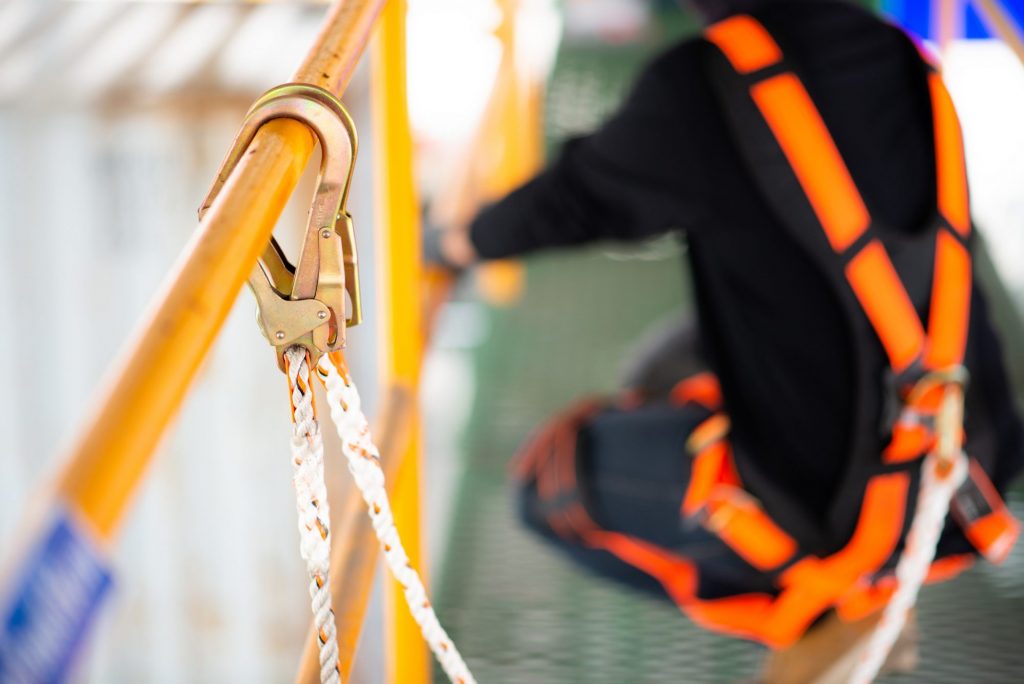Being safe when using any piece of equipment at height is essential to avoid a nasty injury and putting your life or the lives of others in danger. If used correctly and safely a scaffold tower can be very effective for working high up for a long period of time, they’re easy to assemble and can be moved from one position to another fairly simply. Also, they can provide more accessibility for areas that would usually be more challenging to get to, on construction sites for example. It is important to be aware of the key safety guidelines when using a scaffold tower. Here are some simple dos and don’ts for scaffold tower safety that you need to know.
Dos
The introduction of the Work at Height regulations has helped to reduce the risks of using scaffold towers. Our list of things you must do to be safe on a scaffold is based on the guidelines set in these regulations.
- Carry out a thorough risk assessment of using a scaffold tower in your work environment before assembly or use. The assessment should be completed by someone with relevant training and experience in assembling towers. Through doing so they can detect any issues with the tower itself during its assembly and eliminate any potential hazards in the area. It is advised that workers on scaffolding get the official certifications to do so.
- Be aware of safety procedures, any person working on or around the equipment must be aware of the procedures for using a tower on site before they can use it. Some safety standards are obvious such as wearing a hard hat and a high visibility jacket, as well as keeping tools and materials organised on site.
- Make sure the tower you are going to use is right for the work you are planning to do.
- Always place a scaffold tower on a surface that is firm and level.
- Make sure workers have regular breaks and rest to minimise the chances of an accident.
- Always avoid areas where there will be overhead obstructions or power lines
- Only build the tower to the height that is recommended by the manufacturer and always follow the instruction manual provided precisely.
- Ensure any person assembling or working on the tower has read the manual.
- Tower components must be inspected at regular intervals to ensure they have not sustained and damage or wear and tear, so they are still in a suitable condition to be used.
- Understand the weight capacity of the tower you are using, exceeding the weight limit will affect the structure and stability of the scaffold.
- Use additional safety gear, for example a safety belt and harness as workers will be spending a lot of time above ground. Also, safety ropes are useful for tools and heavy equipment to prevent accidents.
- Add sufficient signage on and around the scaffold, other workers may not always be aware that they are working near a scaffold, so signs are good to raise awareness of this. Scaffolding tubes are painted different colours like, blue, orange, and red for the same reasons, increased visibility of the tower will make people aware of the work going on.
Don’ts
- Never work on a platform without guardrails, the likelihood of an accident is much higher if a worker does not have rails on the platform they are standing on.
- When building or dismantling a scaffold tower, never stand on a platform that is unprotected as this could lead to an injury or damage to the tower.
- Don’t try and erect a tower without a manual, no manual should mean no tower, continuing without one is highly dangerous and reckless.
- Never use a tower during bad weather conditions, you would be putting lives in danger.
- Don’t assume your tower will always be in good condition, regular inspections still need to be carried out before every use.
- Don’t climb up or down the tower or enter it from an unapproved point, your risk of falling is much higher if you do this.
- Don’t remove any ties or bracing without consulting the site manager first.
- Don’t attempt to use a makeshift platform, always use the correct type of boards and bearers
- Don’t remove anything from the structure of the tower such as boards, handrails or ladders, contact your supervisor first. Always keep the structural integrity of the tower.
- Never throw, drop, or tip any materials whilst high up on the tower, it could cause injuries to those on the ground below.
- Don’t remove any signs from on or around the scaffold tower until the work is completed.
For your scaffold tower needs check out our range of products here at BPS Solutions. Any tower sold will come with free next day delivery and a lifetime guarantee. Also go and have a look at what is in our warehouse clearance sale now and get yourself a bargain.
No related posts.



